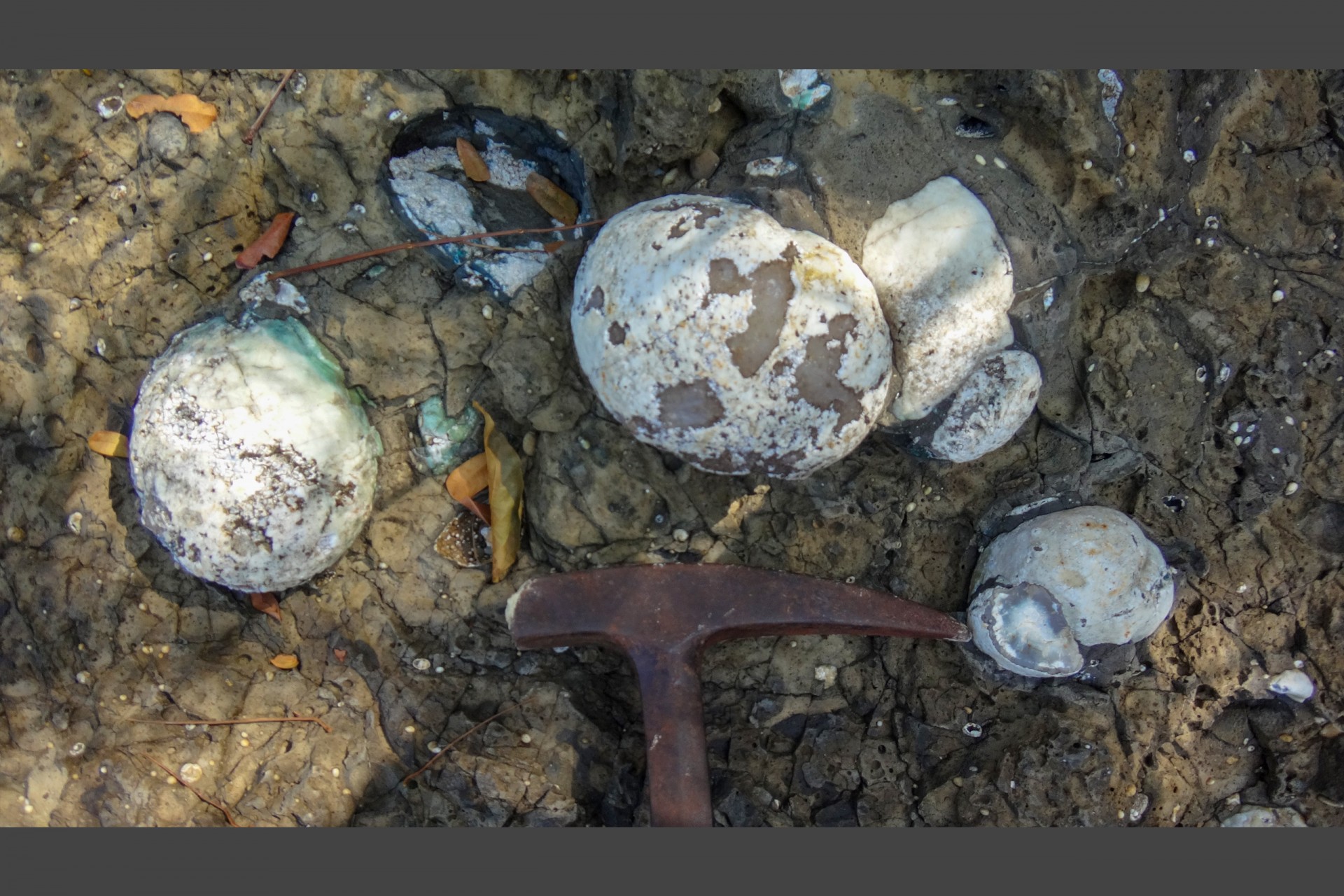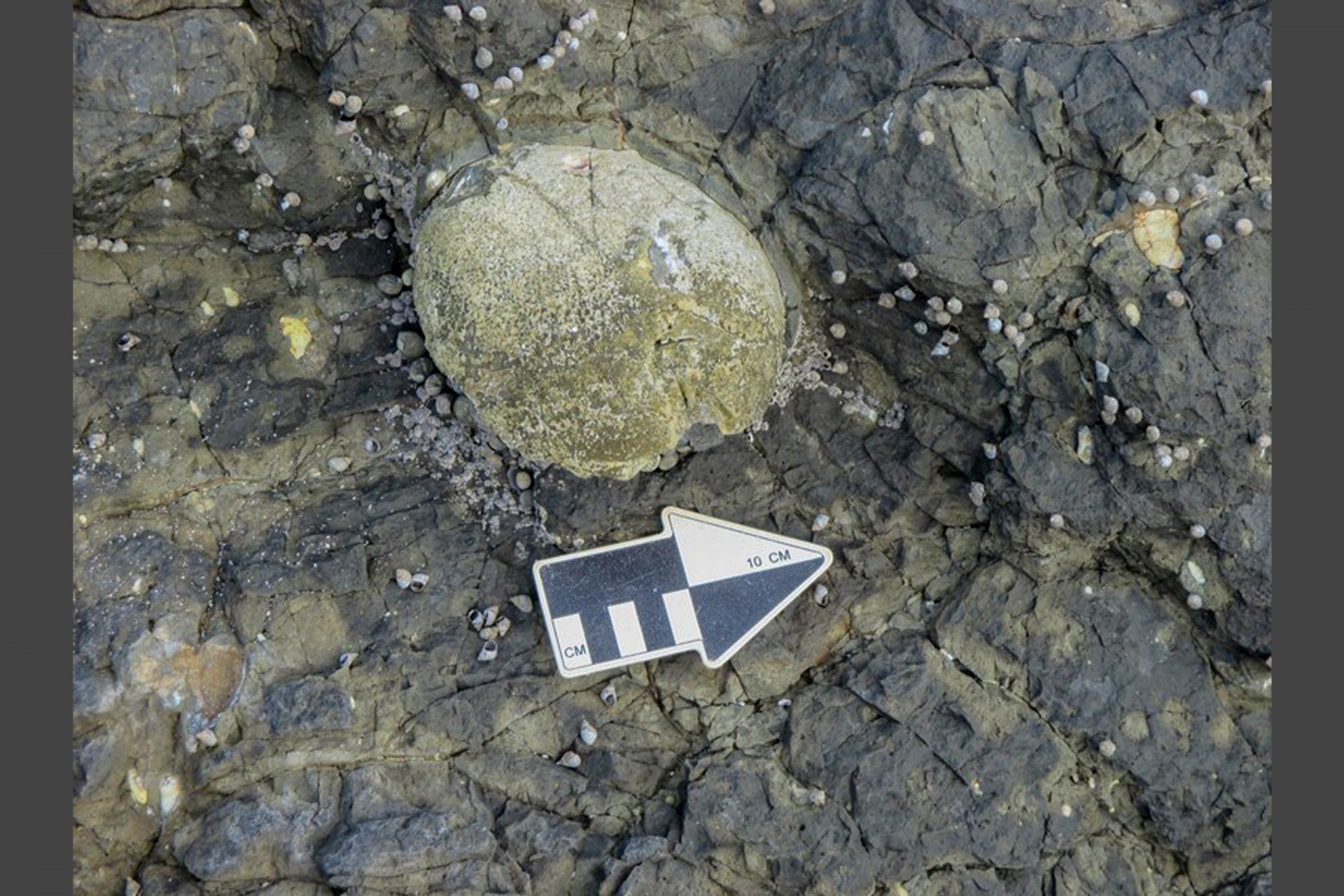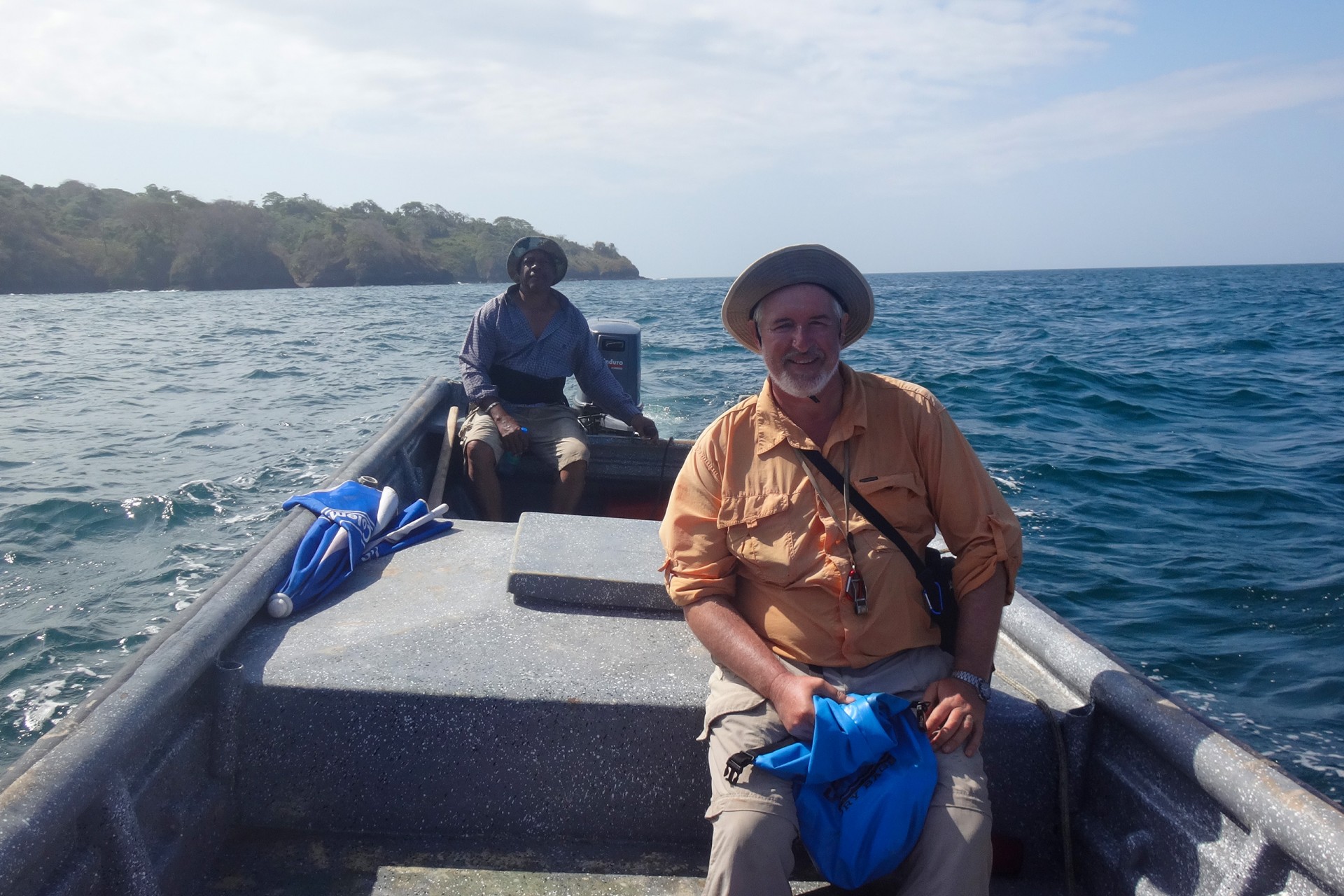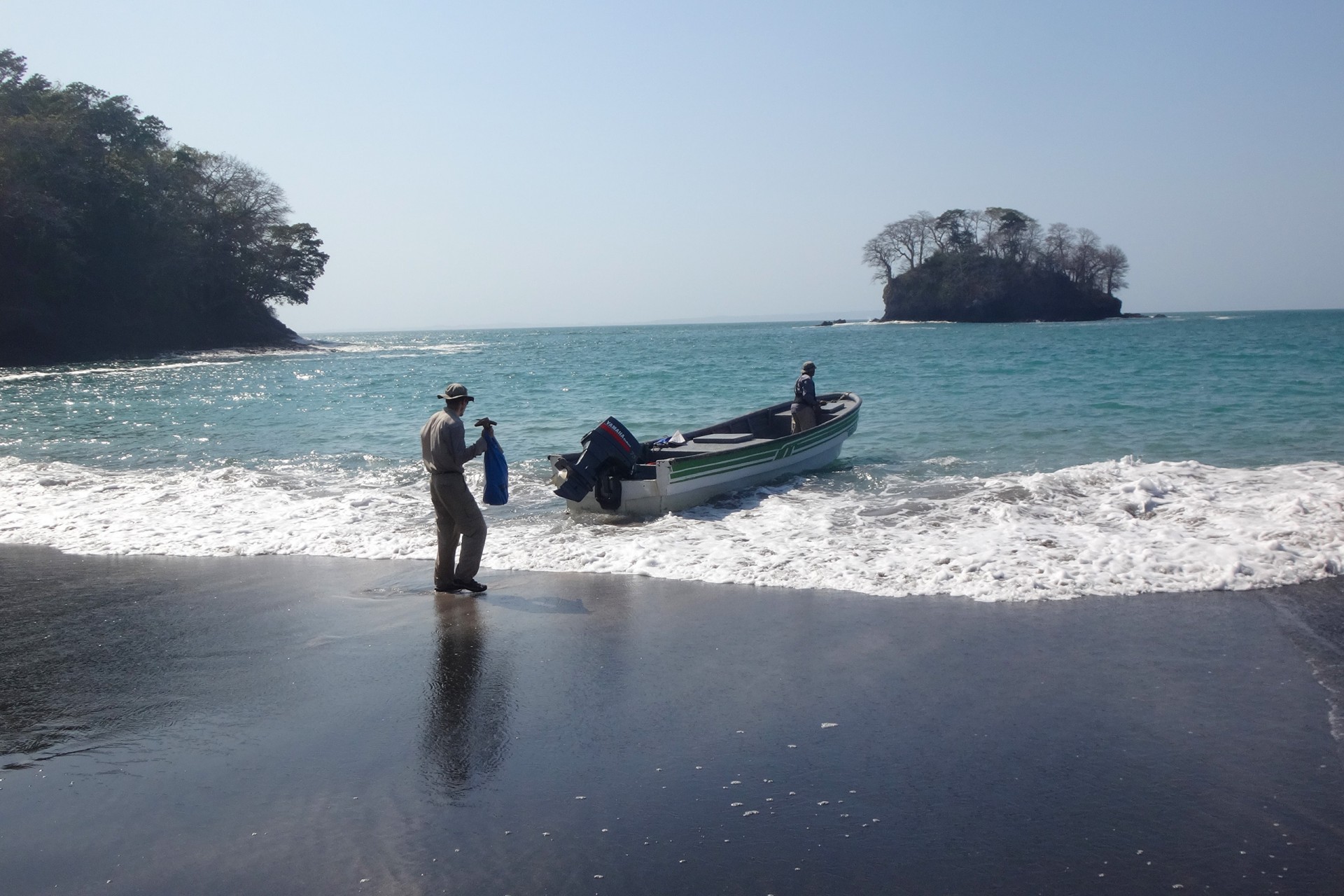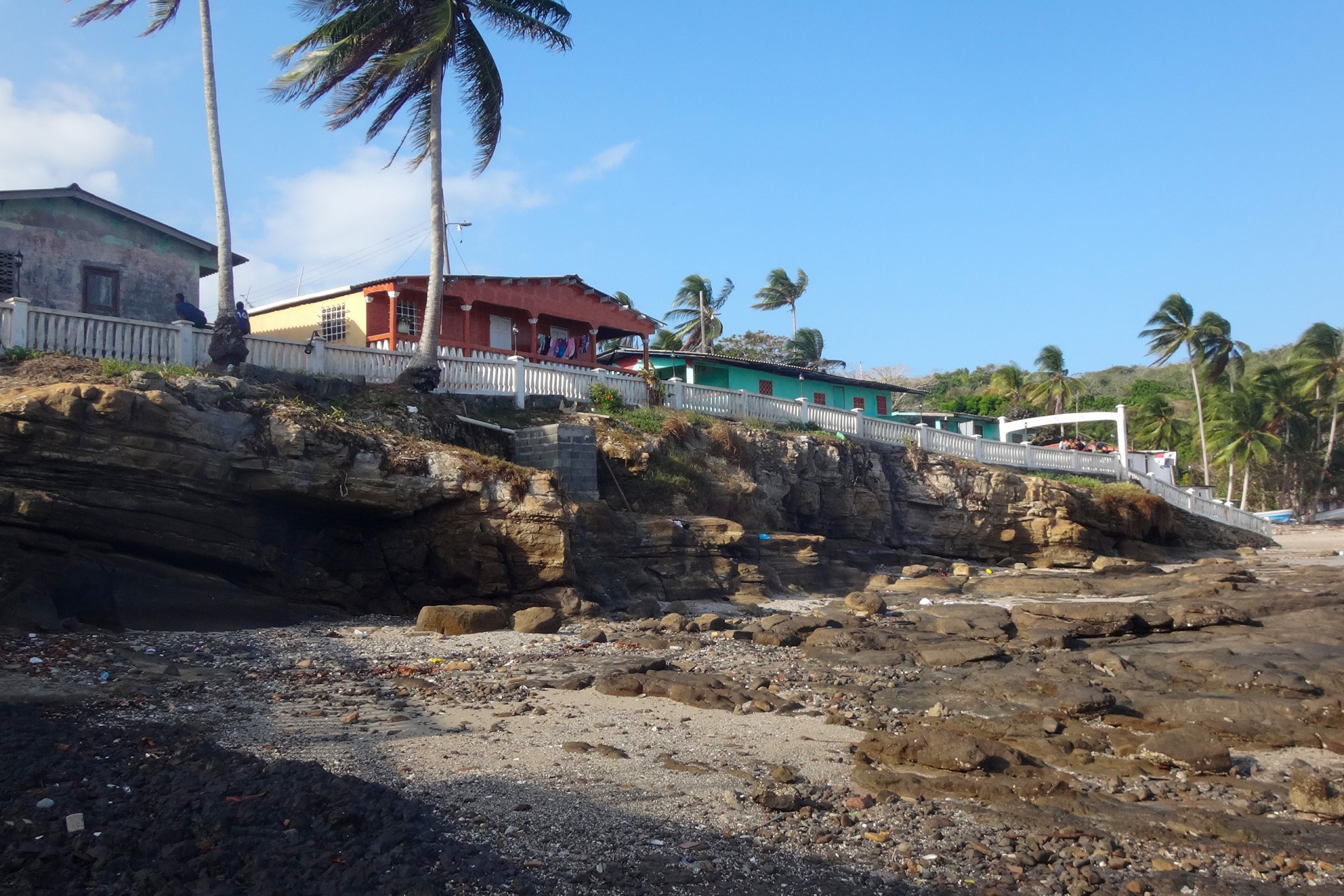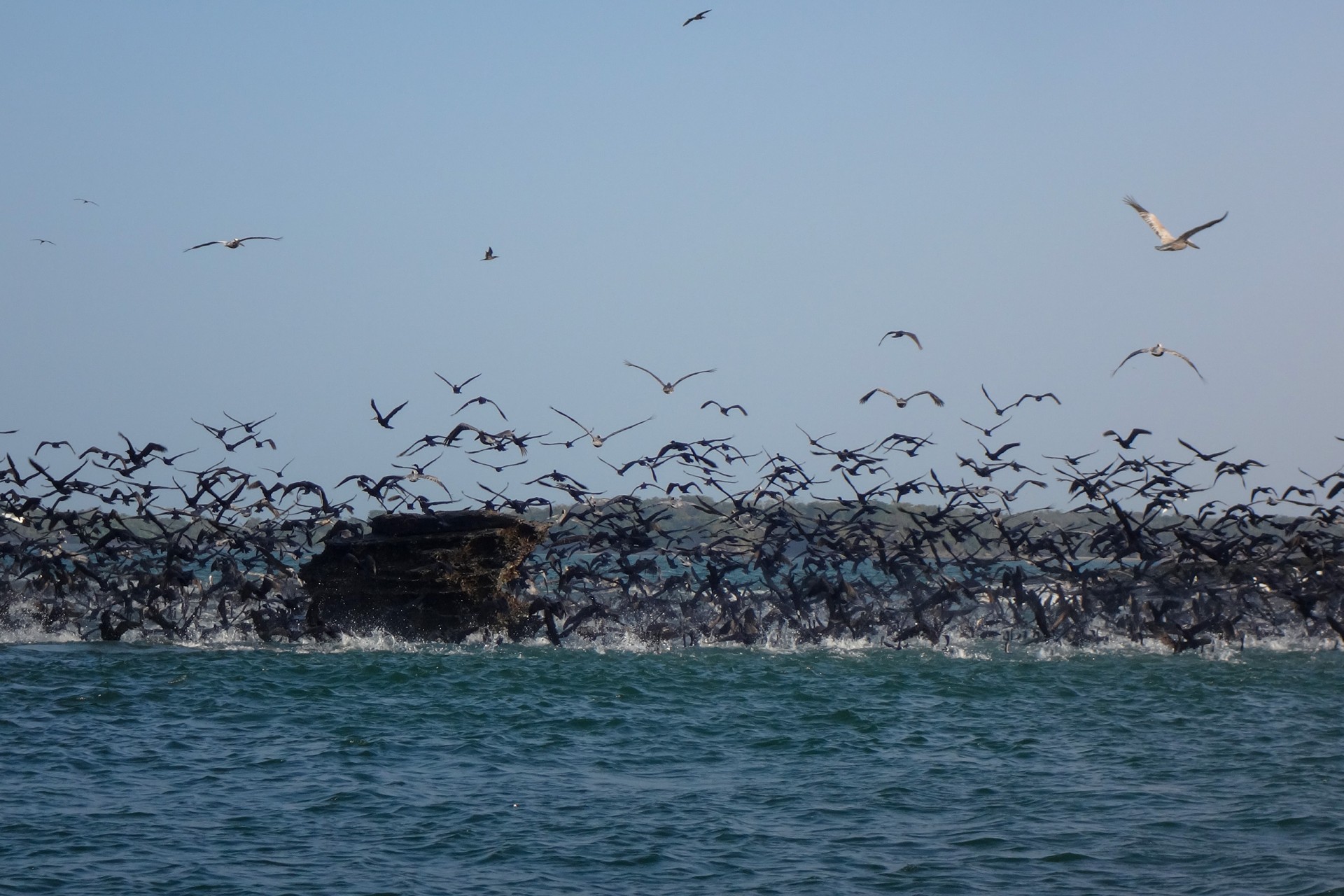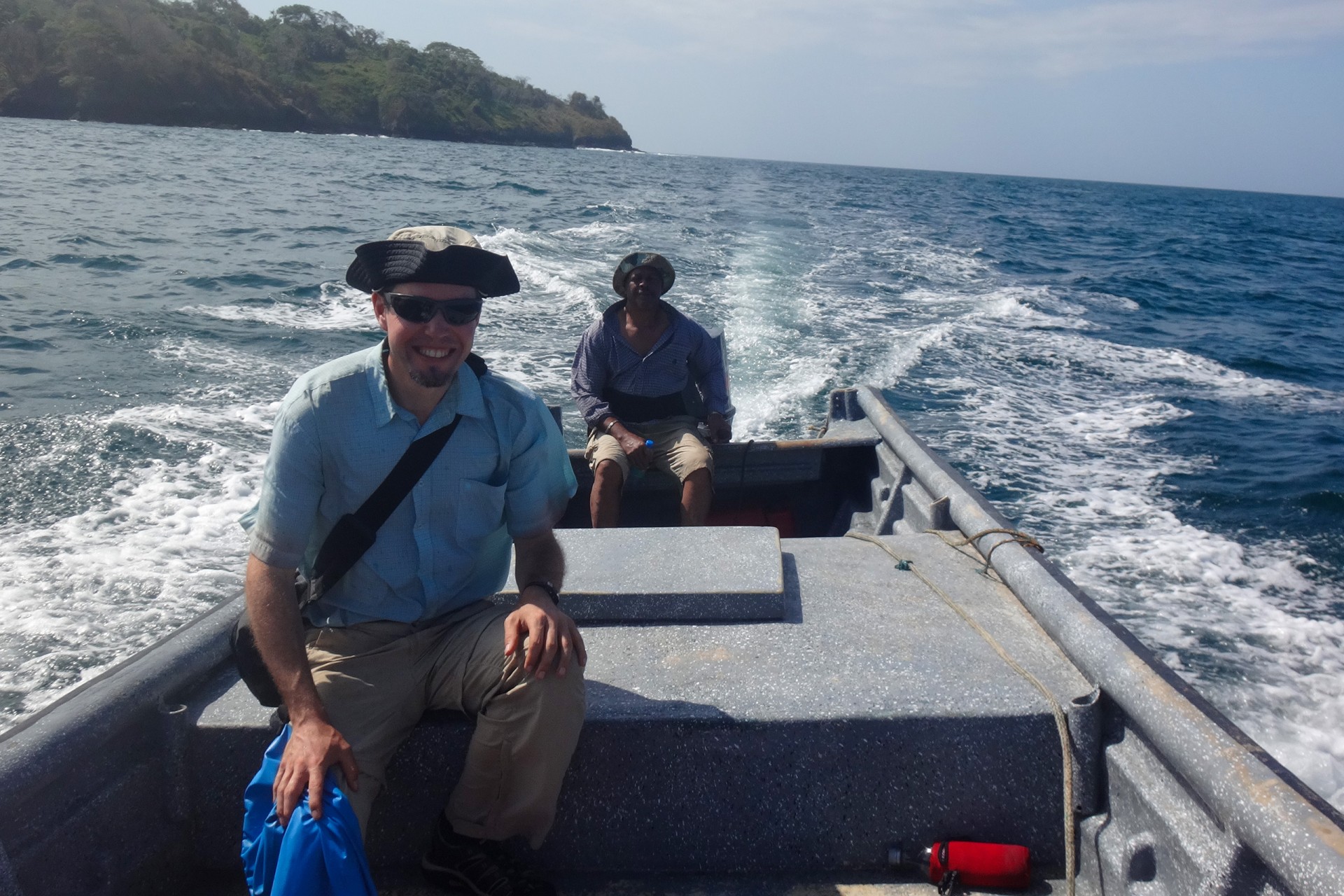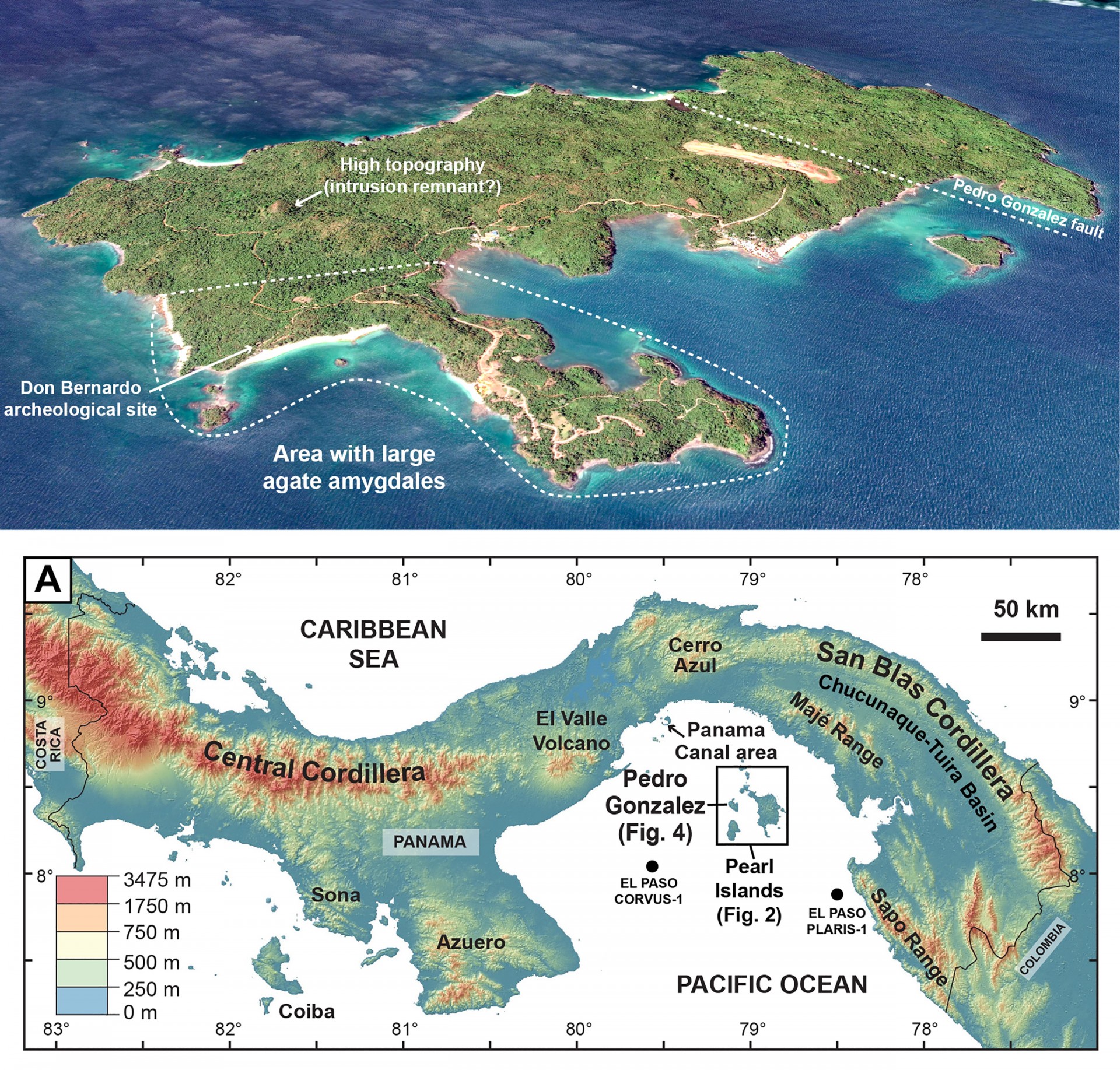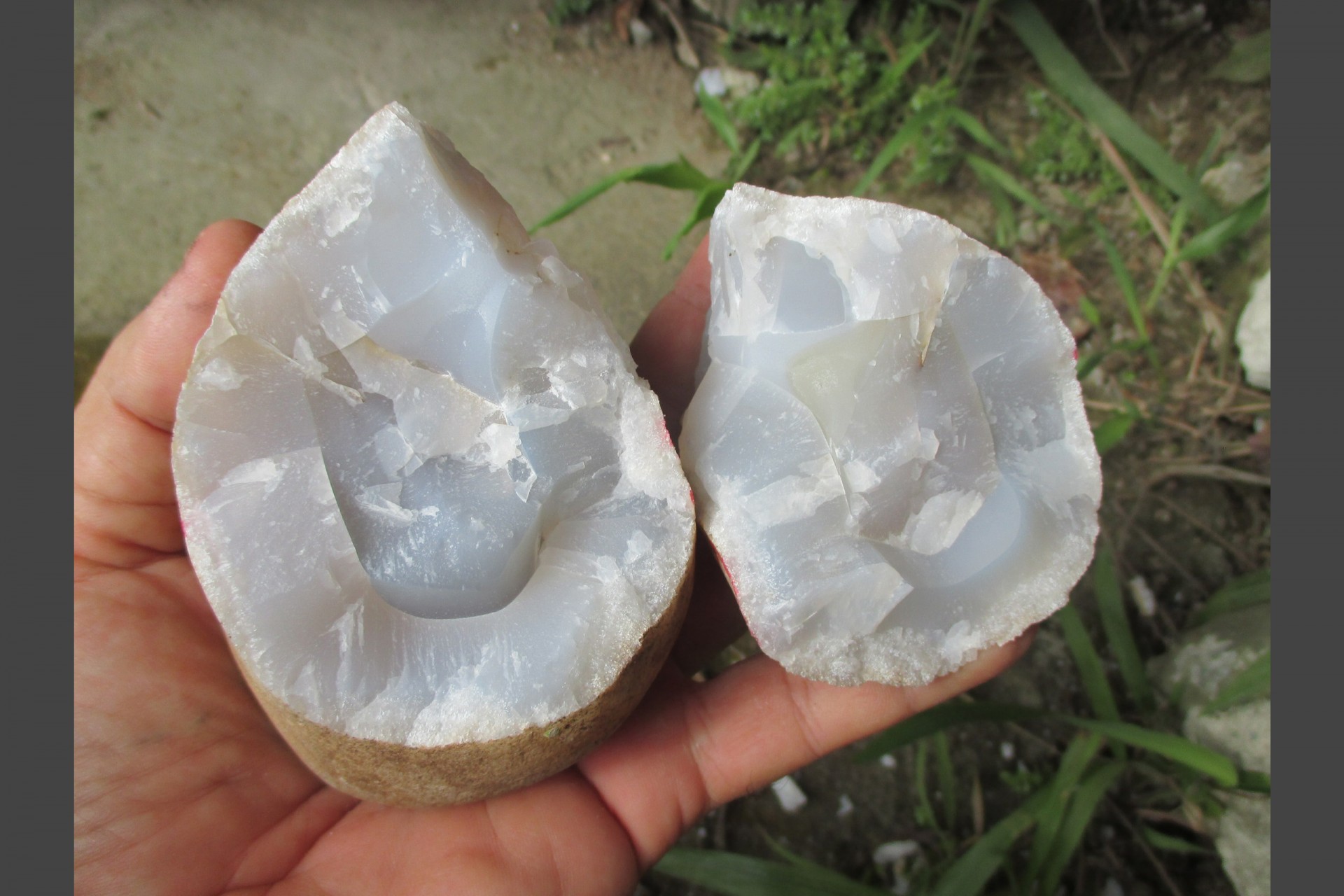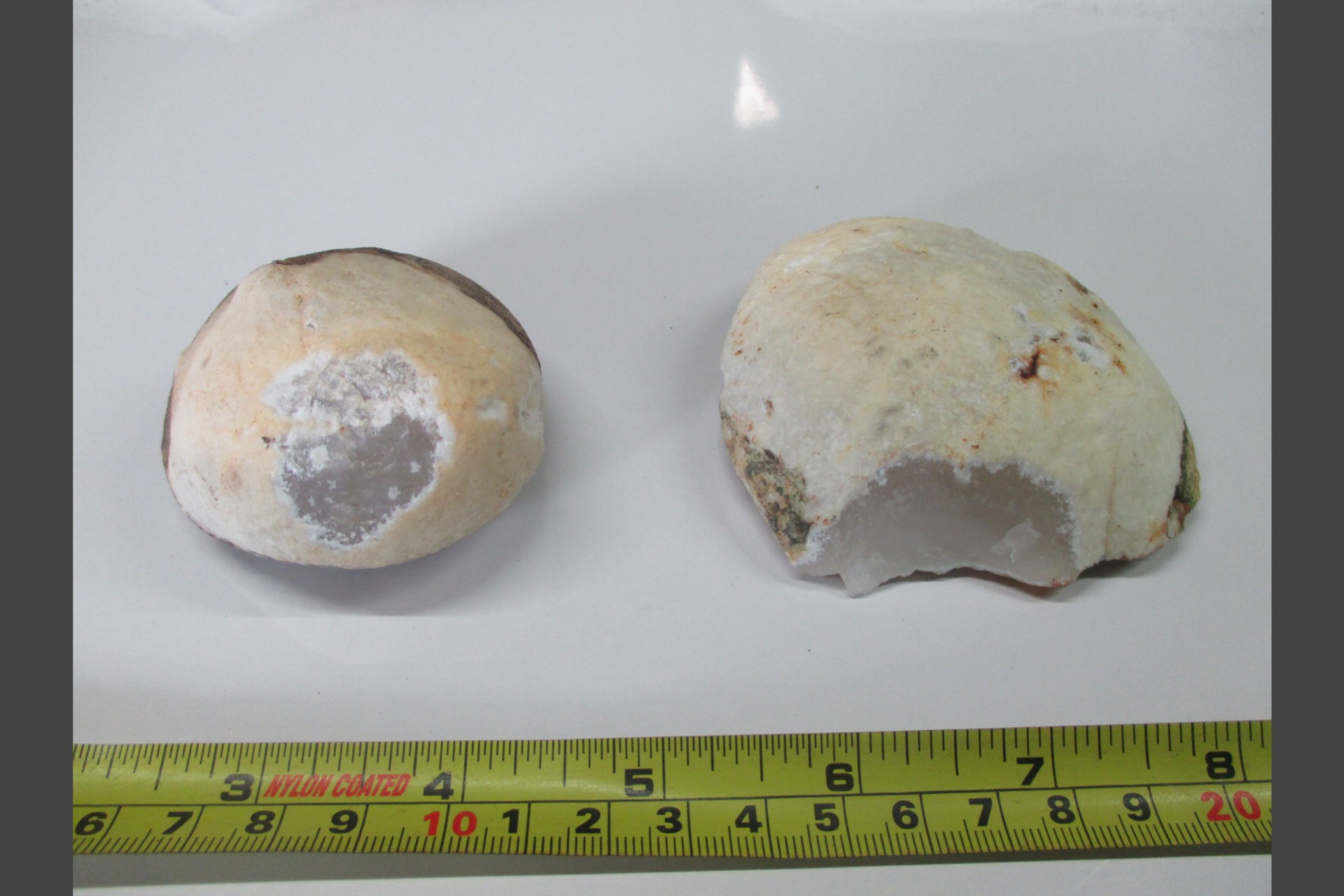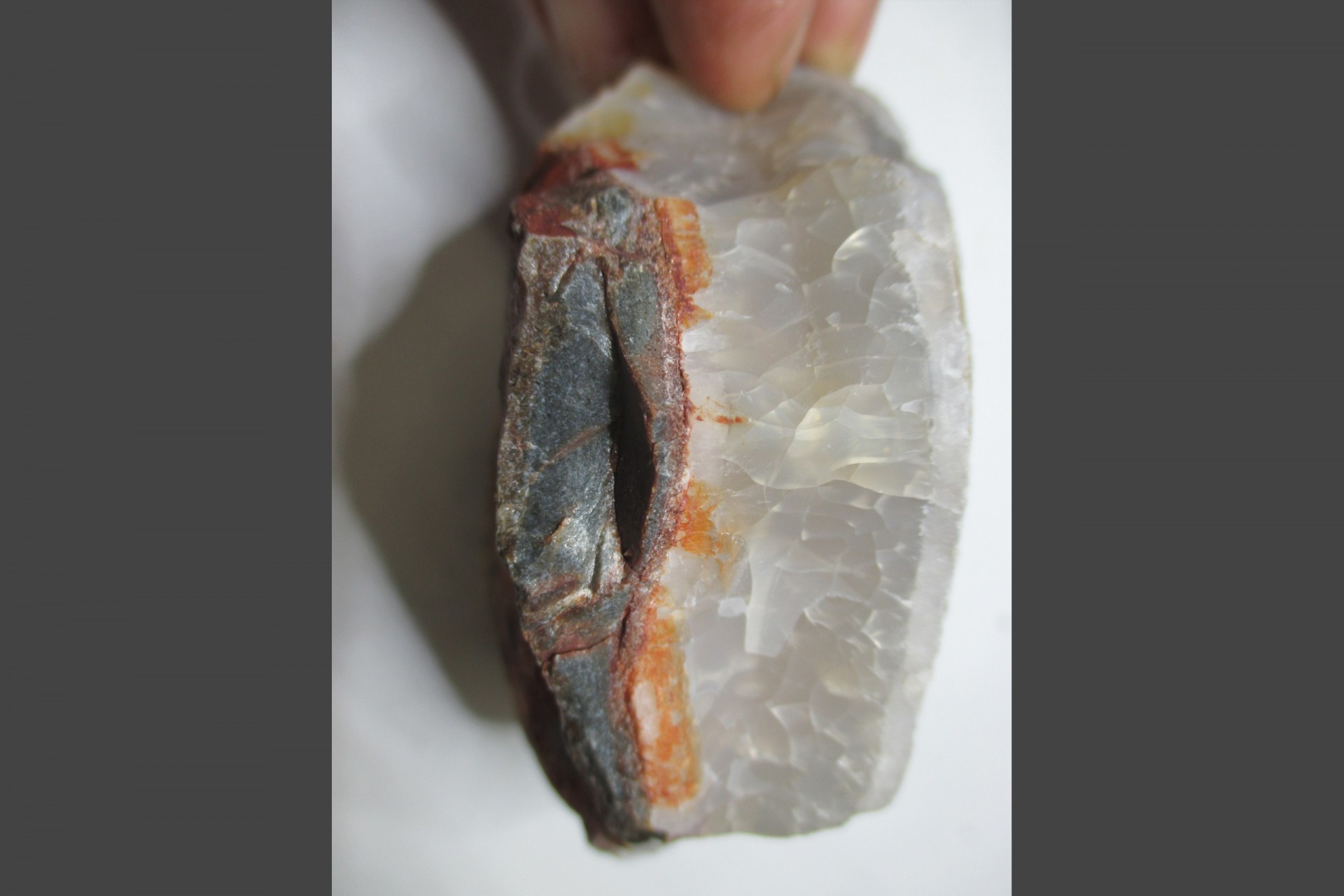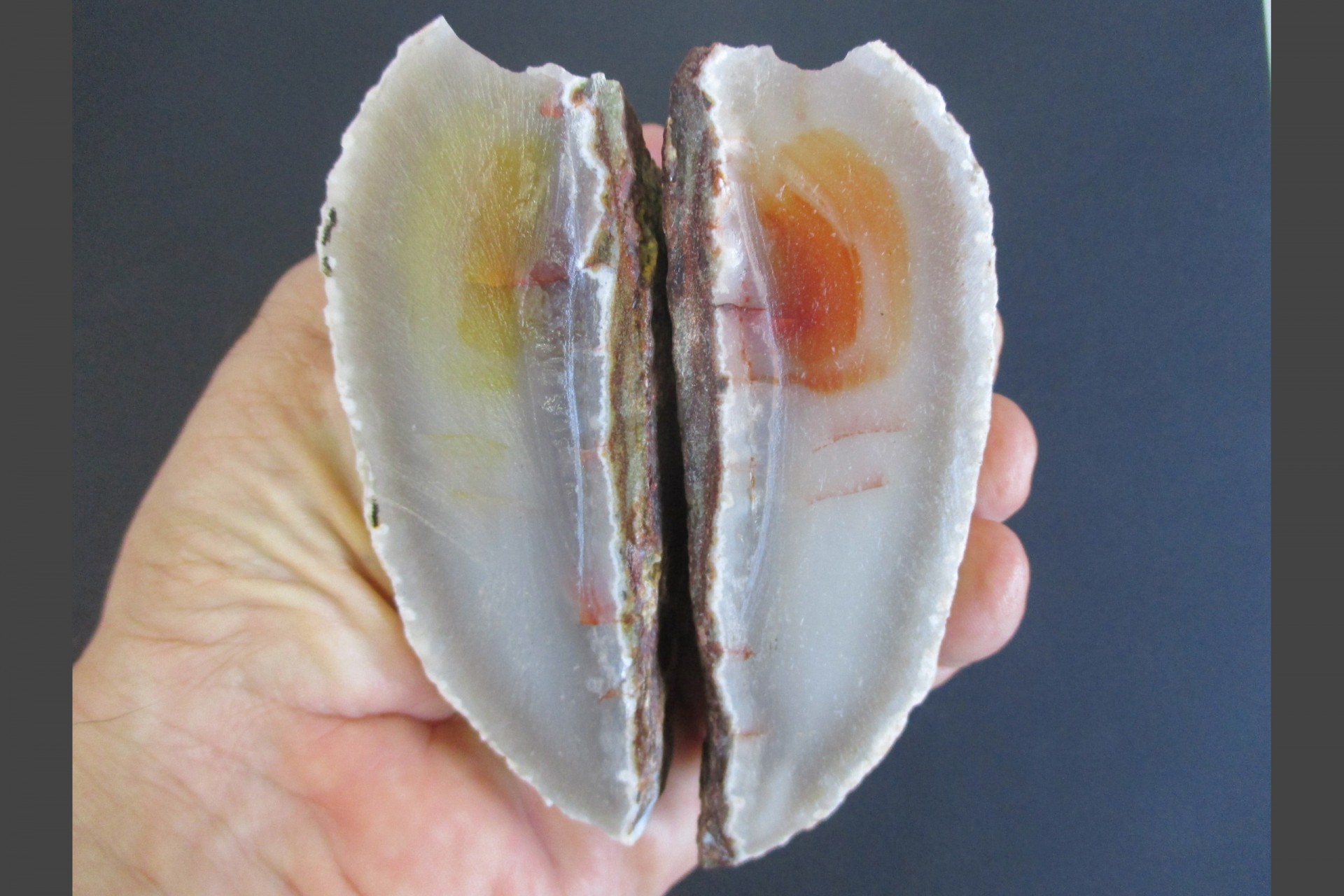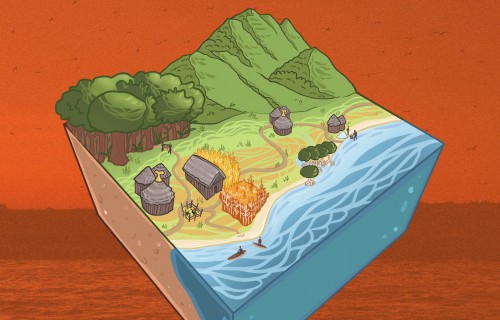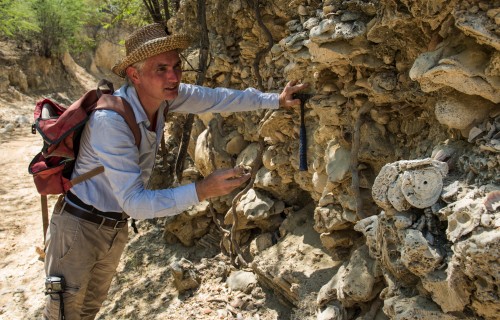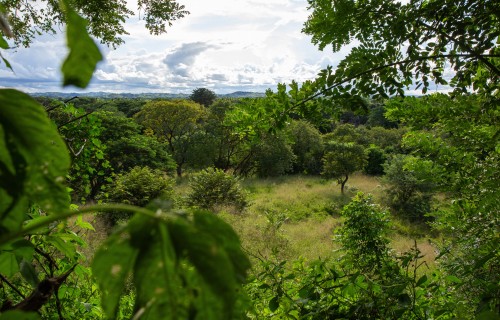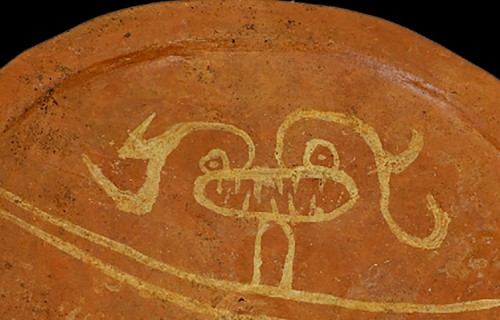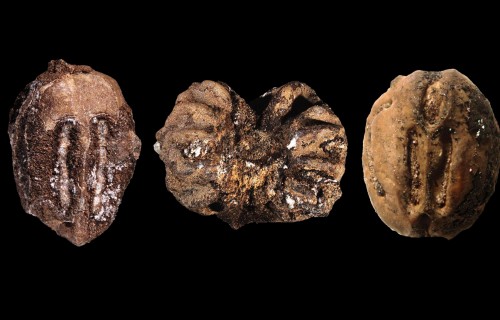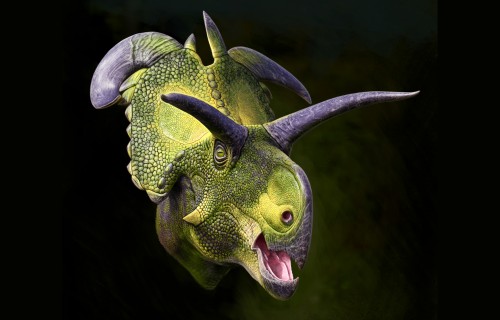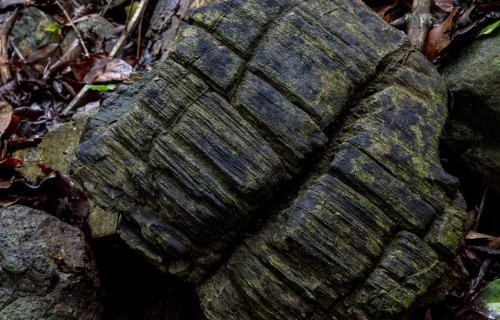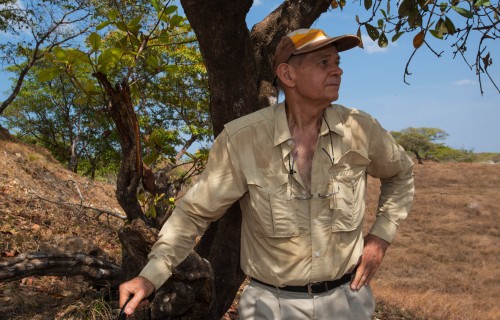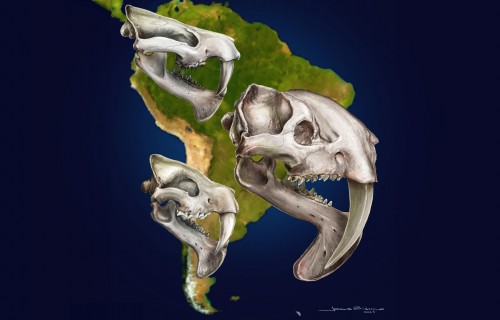A rocky
start
Unique agates on a Panamanian island reveal submarine volcanic activity
Text by Vanessa Crooks
Giant agates found in an island on the Pacific coast of Panama prompted a study on the area’s geology to answer the question of how the Isthmus evolved and became a bridge between two continents.
In the Archipelago of Las Perlas (Pearl Islands), in the Gulf of Panama, large amounts of agates were found during archaeological excavations of a Preceramic settlement on Pedro Gonzalez Island. Evidence shows that the early human settlers made good use of these large agates by shaping them into tools. But how did these agates form and why are they so large?
Consulting geologist Stewart Redwood, David Buchs, research associate at the Smithsonian Tropical Research Institute (STRI), and University of Birmingham geochemistry PhD student Davey Cavell, published a paper in Geological Magazine online in December 2021 and in print in the May 2022 edition, titled Submarine volcanic activity and giant amygdale formation along the Panama island arc as a precursor to 6000-year-old agate exploitation on Pedro González Island, about their multi-disciplinary study of the island’s geological setting in which the agates formed, and what it reveals about the evolution and closure of the Isthmus of Panama.
“The geology of the island was not what we expected,” Redwood says. “The volcanic and sedimentary rocks show features of having formed close to an ocean island in a volcanic arc.”
The project began in 2009 when STRI archaeologist Richard Cooke was studying the presence of a Preceramic human settlement in the island’s Don Bernardo Beach. Cooke found evidence of exploitation of dolphins and other marine and terrestrial fauna using tools made with agate. The settlement dates to 6,000 years ago, making this the oldest known human settlement in the Pearl Islands.
At the time, Cooke invited long-term collaborator Redwood to give his opinion on the source of the agate amygdales on the island. Amygdales are vesicles in the volcanic rock formations that are filled with other minerals such as quartz, calcite, chalcedony, or agate. Amygdales are usually very small, so the giant agates found on Pedro Gonzalez are a unique geological curiosity since there are no other known examples elsewhere in the world.
“My preliminary observations were that the source of the agates was a lava flow,” Redwood affirms. “Subsequent work showed that the distribution maps out in a well-defined area that indicates a plume of hot water charged with silica rising from depth.”
A semiprecious, fibrous, quartz-like silica mineral, agate primarily forms due to volcanic activity: steam and gas bubbles become trapped in the cooling lava and create cavities in the rock. Warm water carrying silica (a major component of rocks and the Earth’s crust) enters these cavities and coagulates into a silica gel, which crystallizes into agate.
“Agate is an interesting mineral and looks beautiful both as pebbles and cut in thin slices under the microscope,” says Redwood. “It grows by self-organized crystallization, rather than by external changes of temperature and pressure, and it matures with time.”
Redwood points out that agate is ideal for making cutting and piercing tools because of its hardness and its sharpness when it is broken. “These giant amygdales are just the right size to be held in the hand, and they are highly abundant on certain parts of the island,” he adds.
Archaeologist and former STRI fellow Georges A. Pearson, who collaborated with Cooke in a 2020 paper on the Preceramic occupation of Las Perlas, studied whole agate nodules as well as tools and pieces that were likely used for flintknapping (making edged stone tools by flaking and shaping).
“The agates were heat-treated by the pre-Columbian inhabitants,” says Pearson. “The nodules were slowly ‘cooked’ for long hours and possibly even days, to make them easier to flake and shape. This work was mainly done by women, who were responsible for making and maintaining food processing tools, like corn and yucca graters.”
Redwood was then invited by archaeologist Juan Guillermo Martin of Universidad del Norte, in Barranquilla, Colombia, to carry out more geological investigations during the rescue archaeology program in 2015 and 2016, during Panama’s dry season from December to April. Buchs, a volcanologist and sedimentologist, joined him on the second trip, supported by a grant from the National Geographic Society.
An oblique satellite image of Pedro Gonzalez Island, which shows the areas where the agates were found, and a map of the Isthmus of Panama, highlighting the location of the Las Perlas Archipelago in Eastern Panama. Credit: Courtesy Stewart Redwood.
Cavell, who is a researcher working on a project in the Darien, contributed analyses of the samples of volcanic rocks and agates and the microscope studies from his PhD project, while Redwood and Buchs made a geological map of the island shore, by boat.
“The shore gives excellent rock exposure, compared to almost none in the interior of the island,” says Redwood. “We used a local panga, an open boat with an outboard motor, and we had a skilled panguero (boat operator).”
Their findings may help determine when the collision of the Earth’s plates with the island arc in Eastern Panama took place and the volcanic activity ceased. Island arcs are chains of volcanic islands produced when one crustal plate overrides another at a subduction zone, causing the melting of the subducted plate deep in the Earth’s crust; this molten rock rises as a submarine volcano and forms islands.
“This is the first time that a relatively old island arc has been recognized in the Pearl Islands, which may have extended from the Panama Canal to the Darien province,” explains Redwood. “Preliminary age dating shows that it’s from approximately 20 million years ago, from the Oligocene to early Miocene age.”
Information on the geology of Eastern Panama, including the Pearl Islands and Darien, is scarce due to the logistical challenges posed by its remoteness, tropical weathering of the rocks, and dense tropical vegetation. However, finding out the extent and age of this volcanic arc of Eastern Panama would be key in the debate about how the Isthmus formed and closed by collision with South America.
Redwood says that the next publication about the coastal geomorphology of the Pearl Islands is being prepared, and they are planning for the next field study to complete the geological mapping of the other islands in the archipelago.
“We already mapped more than half of the islands,” he states. “That will allow us to produce a geological map of the islands, and to better define the extent and nature of the large underwater volcano that we see part of on Pedro Gonzalez, and whether there is additional evidence that it actually emerged to form a volcanic island.”
Reference: Redwood, S., Buchs, D., & Cavell, D. (2022). Submarine volcanic activity and giant amygdale formation along the Panama island arc as a precursor to 6000-year-old agate exploitation on Pedro González Island. Geological Magazine, 159(5), 673-688. doi:10.1017/S0016756821001229

